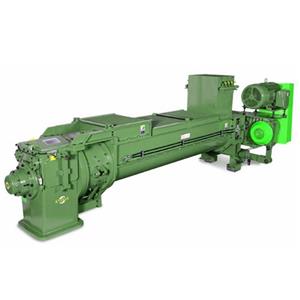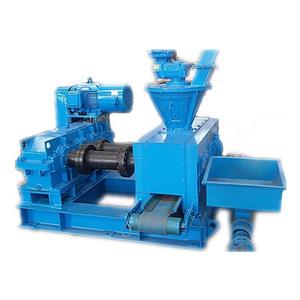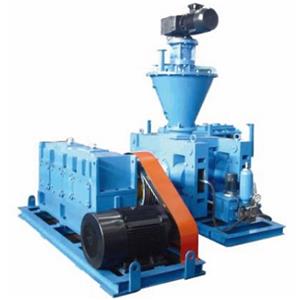-
2201-2025
H2/Coal Reduction: Mineral Processing & Smelting Revolution
Against the backdrop of global climate change, China is actively seeking ways to reduce carbon dioxide emissions in order to achieve the strategic goals of carbon neutrality and carbon compliance. In this context, the application of H2/coal based reduction technology in the field of refractory mineral processing and smelting is leading a new technological revolution.
-
1406-2024
Produce hydrogen-based directly reduced iron (HDRI) in an EAF
In the context of carbon reduction and emission reduction, the new process of electric arc furnace (EAF) steelmaking based on direct hydrogen reduction is an important potential method for the green and sustainable development of the steel industry. Within an electric furnace for the hydrogen-based direct reduction of iron, after hydrogen-based directly reduced iron (HDRI) is produced through a shaft furnace, HDRI is melted or smelted in an EAF to form final products such as high-purity iron or high-end special steel. As smelting proceeds in the electric furnace, it is easy for pieces of HDRI to bond to each other and become larger pieces; they may even form an “iceberg”, and this phenomenon may then worsen the smelting working conditions. Therefore, the melting of HDRI is the key to affecting the smelting cycle and energy consumption of EAFs.
-
1204-2024
6 types of equipment on the oxidation pellet production line
It has been found through practice that the finished ore produced by the grate machine rotary kiln process has the characteristics of uniform quality, good metallurgical properties, more usable fuels, and strong adaptability to raw materials. This article introduces what equipment should be equipped with this production line equipment.
-
2203-2024
A Study on the Influence of Drying and Preheating Parameters on the Roasting Properties of Limonite Pellets (2)
The results show that the optimal drying, preheating, and roasting temperatures of limonite pellets are 200 °C, 700 °C, and 1250 °C, respectively, and the optimal roasting time is 20 min, when the diameter of the pellets is 8–13 mm. The compressive strength of limonite pellets with the addition of 1.5% bentonite was the highest, meeting the demands of a general blast furnace, based on which the iron grade of limonite pellet ore was increased by 10.63%.
-
1503-2024
A Study on the Influence of Drying and Preheating Parameters on the Roasting Properties of Limonite Pellets (1)
In this experiment, a pellet preparation method was investigated to study the drying, preheating, and roasting properties of limonitic iron ore from a plant in Yunnan. The aim was to improve the subsequent iron-making process of limonitic iron ore and make it a substitute for sintered ore. This substitution would reduce the amount of blast furnace slag in the iron-making process. Bentonite is commonly used as a primary binder in many pelletizing plant operations. However, its excessive usage leads to a higher risk of slagging and coking in the furnace.
-
0803-2024
Pressurized Chemical Looping for Direct Reduced Iron Production: Economics of Carbon Neutral Process Configurations (2)
First, amine-based post-combustion capture with a 95% capture rate was considered as the benchmark, as it is currently commercially available. A second, novel configuration integrated the Midrex process with pressurized chemical looping—direct reduced iron (PCL-DRI) production. The amine capture configuration is most sensitive to the cost of steam generation, while PCL-DRI is more sensitive to the cost of electricity and the makeup oxygen carrier. An iron-based natural ore is recommended for PCL-DRI due to the low cost and availability. Based on the lower costs compared to amine-based post-combustion capture, PCL-DRI is an attractive means of eliminating CO2 emissions from DRI production.
-
2302-2024
Pressurized Chemical Looping for Direct Reduced Iron Production: Economics of Carbon Neutral Process Configurations (1)
The replacement of the blast furnace—basic oxygen furnace (BF-BOF) steelmaking route with the direct reduced iron—electric arc furnace (DRI-EAF) route reduces the direct CO2 emissions from steelmaking by up to 68%; however, the DRI shaft furnace is one of the largest remaining point source emitters in steelmaking. The capital and operating expenses of two potential nearly carbon-neutral DRI process configurations were investigated as a modification to a standard Midrex DRI facility.
-
0202-2024
Effect of Carbon Addition on Direct Reduction Behavior of Low Quality Magnetite Ore by Reducing Gas Atmosphere (2)
To overcome the limitations of the above two processes, and to achieve a more efficient direct reduction process of iron ore, the possibility of combining these two methods was investigated. The experiments focused on performing an initial direct reduction using ore-coal composite pellets followed by a second stage gas reduction. It was assumed that the initial reduction of the carbon composite pellets would enhance the efficiency of the subsequent reduction by gas and the total reduction efficiency. The porosity, as well as the carbon efficiency for direct reduction, were measured to determine the optimal conditions for the initial reduction, such as the size ratio of ore and coal particles. Thereafter, further reduction by the reducing gas was carried out to verify the effect of the preliminary reduction. The reduction kinetics of the reducing gas was also discussed.
-
2701-2024
Effect of Carbon Addition on Direct Reduction Behavior of Low Quality Magnetite Ore by Reducing Gas Atmosphere (1)
Recently, direct reduced iron (DRI) has been highlighted as a promising iron source for electric arc furnace (EAF)-based steelmaking. The two typical production methods for DRI are gas-based reduction and reduction using carbon composite pellets. While the gas-based reduction is strongly dependent on the reliable supply of hydrocarbon fuel, reduction using ore-coal composite pellets has relatively low productivity due to solid–solid reactions.
-
1901-2024
Effect of H2 on Blast Furnace Smelting
In this paper, the research status of the thermal state, reduction mechanism of iron-bearing burden, coke degradation behavior, and formation of the cohesive zone in various areas of blast furnace after hydrogen-rich smelting is summarized, which can make a more clear and comprehensive understanding for the effect of H2 on blast furnace ironmaking.




